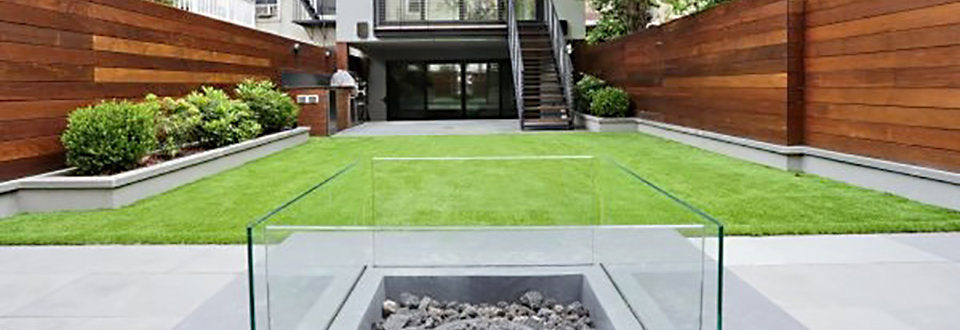See our article on Bay Magazine here
Artificial Grass – Ahead of the Game
Athletic fields are a commonly known use for artificial grass. Reducing maintenance costs, increasing play times and enhancing the look of professional, college and school fields everywhere. But the uses and benefits of artificial grass don’t end after the game! Artificial Grass options are limitless and a smart choice for applications big and small.
Artificial Grass – Adding Space and Value
Artificial Grass is a smart option for everyone who wants to increase the usable space of any size property while saving on maintenance costs. Homeowners enjoy the appearance and function of lush, natural grass with a no maintenance backyard. Perfect for a picnic, putting green or around the pool. No yard? Artificial grass is perfect for balconies, rooftops and courtyards. Artificial grass is water-permeable and can be easily installed in places grass cannot grow or where low maintenance is preferred. Homeowners can spend that extra time and money on their families.
Artificial grass is an excellent choice for larger, commercial properties. The beautification of industrial parks, airports, large office complexes and other landscaped areas is a growing segment of the commercial market. Why? Because it makes great business sense. Installing artificial grass on areas traditionally covered with landscaping creates a beautiful, vibrant environment while positively impacting the bottom line.
Municipalities are pleasing their residents and taxpayers by using Artificial grass, it has been installed on school grounds, daycare’s, batting cages and dog runs all around the country. It creates a fun, fresh, clean and mud free environment for families and pets. Artificial grass does not contain any allergens, harbor insects or discolor from pet urine.
There is one visitor municipalities and industry agree they do not want, Canadian geese. Recent evidence has shown that the geese prefer natural grass areas over artificial grass. Canadian geese can cause a great deal of property damage and are very dangerous near airports. Switching out some or all areas with artificial grass can be an effective tool in reducing their impact.
Artificial Grass is GREEN
Working towards USGBC LEED certification for your project? Artificial grass is recognized as a GREEN material that contributes to sustainable building. Housing and commercial developers appreciate the role artificial grass can play in obtaining USGBC LEED certification for their project, resulting in a variety of tax benefits. Using GardenMark products can help builders meet USGBC LEED criteria under several categories (SS61, SS62, WE1, MR4, and MR6.1) and can provide an attractive, cost effective way to create a sustainable project.
The environmental benefits continue well after the project is completed. The use of a non-toxic, non-absorbent “synthetic soil” that is pet and environment friendly, prevents bacteria growth and can be cooler than black crumb rubber and more sanitary than silica. It’s just a one-time application, keeping costs down.
The “greenest” aspect of artificial grass is in the simple upkeep. There are no harmful fertilizers, weed killers or pesticides leaching into the ground. No mowing means no noxious emissions from gas powered equipment and no grass clippings, which the EPA states are the third largest component of municipal solid waste in landfills.
Water conservation is vital in most areas of the country. Federal and local regulations regarding water use and reductions have become increasingly strict. The Synthetic Turf Council estimates that the use of artificial grass has resulted in the conservation of between three to six billion gallons of water in 2010. In addition to saving money on water bills, some cities offer rebates or credits for residents who install artificial grass as a water-saving landscaping alternative. This is good news for the environment and the artificial grass industry and will continue to create new areas of demand.
Artificial Grass is Growing Employment
According to The Synthetic Turf Council, “synthetic grass for landscape, golf and other recreation applications is the fastest growing segment of the synthetic turf market.” In 2014, 40-45 million square feet of synthetic grass for landscape and recreation was installed. Artificial turf and grass installations are expected to increase significantly as residential, commercial and municipal construction markets continue to seek ways to reduce costs, save on maintenance and reduce environmental impacts,
In order to fill this growing demand, the market needs Certified Artificial Grass installers. The base prep is almost identical to that of a paver base and most installers only need training on seaming and project design before they can add this as an additional service to offer their clients.
Meeting New Demand
Many of the latest developments and innovations in the industry is the use of a shock pad that answers market demand for schools and daycare’s that is compliant with the American Society of Testing and Materials (ASTM) standards for gmax; measurement of shock absorption and meets ADA federal standards for mobility devices. Shock pad can also be environmentally friendly when made of recycled material.
Artificial grass products vary in their composition so that an infill is unnecessary which saves time and money during the installation process. And new developments and advanced technology allows for a superior product to offer upwards of a fifteen year warranty on their artificial grass products.
GardenMark LLC is a one-stop supplier of Artificial grass headquartered in Hoboken New Jersey. All artificial grass products are always in stock, including all accessories needed for a quality installation. Timely delivery to the tri-state area and the entire eastern seaboard is available. GardenMark also offers free training and certification to contractors and landscapers.


leave a comment